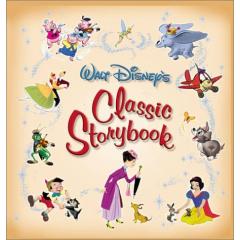

The entertainment industry seems a slippery business to Wall Street. It’s difficult to explain in words why one entertainment property succeeds while another fails. Communicating with Wall Street and other influential laymen may very well be the most difficult part of an Entertainment CEO’s job. How does one quantify intangibles? How does a CEO convince investors and the public that his or her company has the winning formula? For Michael Eisner in the mid-1980s, the solution included an easy-to-remember sound byte: “It’s all about story.”

These four words were sent out to all corners of the Disney empire like a royal decree. At Walt Disney Imagineering, the decree arrived at a pivotal moment in its history. The old guard (Walt’s guys and gals) were retiring and the new generation was stepping up. They were young and eager to make their mark. Like their counterparts in the motion picture industry, they were looking for a standard against which to judge new ideas--a litmus test for creative ideas. And it wouldn’t hurt if they could find a way to curry favor with their new boss in the process. The answer dropped right in their laps.
The phrase, “What’s the story?” became a ubiquitous part of the Imagineering lexicon. Nothing marked the transition from WED to Imagineering better than the arrival of the new dogma of story. Attraction concepts were killed for lacking it, careers were made for those who embraced it, and destroyed for those who denied it. Screenwriters were hired and visual artists were laid off (ironically, some of these artists would have been called “story artists” had they worked in animation). Imagineering was transformed and the message went out to the world. Every Imagineer who sat down for an on-camera interview repeated Eisner’s mantra, “it’s all about story.” Imagineers literally began to believe their own press as a sound byte (originally designed to simply differentiate Disneyland from Six Flags for laymen) became doctrine. New Imagineers, laymen themselves, were indoctrinated into this new culture of story and a revisionist history was born.
Some claim the story culture began long before the mid-1980s--that it started with Walt. This is hard to prove and still harder to disprove (statements made by different Walt-era Imagineers contradict each other). Certainly "Story" was Walt's most-repeated mantra for the success of animation and live-action films. But in the context of theme park attractions, this was not the case. It is undeniable that during the mid-1980s linear storytelling was embraced by Walt Disney Imagineering with an unbridled enthusiasm never seen in Walt’s day.
Think about some of the classic Disneyland attractions--Pirates of the Caribbean, Haunted Mansion, Matterhorn Bobsleds and “it’s a small world.” How would they fare against the story litmus test? Do they have a beginning, middle and end? A clear antagonist or protagonist? Would they be better if they had a clearly defined inciting incident, conflict and resolution? Without these things an attraction has no story, and therefore is no good--according to the current dogma.

So, has the injection of story in recent years improved the quality of theme park attractions? Well, sometimes. The immersive backstory created for the Twilight Zone Tower of Terror adds layers of depth to the experience--heightening the sense that the guests are visiting a real place with a real history. However, in Kilimanjaro Safaris at Disney’s Animal Kingdom, a tacked-on story about a baby elephant makes the experience seem less credible, more contrived and altogether artificial. It disrupts an otherwise beautiful and realistic experience.

Unfortunately, it seems that in recent years the trend has been toward story at the expense of all else. Simple easy-to-read sight gags like those found in Pirates of the Caribbean (three guys in jail with a bone and a little dog outside holding the keys) have given way to traditional three-act structure with an inciting incident, conflict and resolution. Complicated and overly talky premises dominate attractions such as “Honey, I Shrunk the Audience,” Journey Into Imagination (versions 2 and 3), Dinosaur, Sounds Dangerous, and Stitch’s Great Escape.
Spending time and money obsessing over how to communicate story details at the expense of creating a unique immersive experience may seem blatantly foolish, but that’s what comes from close adherence to an unquestionable dogma. Like any dogma, it exists to serve the ruling faction. If you consider the fact that a handful of “creative executives” at Imagineering have built their careers on the myth of story, it becomes apparent that the true audience for these carefully-crafted stories are not the millions of paying guests who visit Disney theme parks every year, but the executives who constantly ask, “What’s the story?”
Marc Davis’ quote at the top of the page (from “What Can You Learn From Disney’s Work,” Sales Meeting Magazine, July 1969) speaks of a series of experiences building to a climax--these are the trappings of story, as are setting, character, dialogue, action and reaction. Disney attractions have story elements, but they are not literal stories (it may seem like splitting hairs, but this is an important distinction). In other words, the story mantra is not wrong so much as it is imprecise. Failure to use precise language is not a crime, but deliberately manipulating language to suit a selfish political agenda is, at best, questionable. And anyone who suggests that Walt insisted on “story” as the central element to all of his attractions, is presenting a potentially damaging revisionist history.
The word ‘story’ like the word ‘art’ means something different to everyone and can not be used as a litmus test for creativity. Nothing can. Walt-era imagineers inherently understood how to entertain people. They understood the effects of story so well, they knew when not to use it. They were chosen by Walt personally because he recognized that they “got it.” No litmus test required. No artificial formula.
Just hire people who get it.











